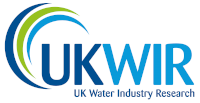Tracking and addressing sources of environmental pollution
20/11/2020
The SAGIS-SIMCAT model has been informing regulatory and investment decisions and, ahead of 2024, will be enhanced further so the industry can meet the challenges of the future and deliver the best outcomes for customers and the environment.
Starting in 2009, following the production of the first River Basin Management Plans, UKWIR began this work with its water company members, the Environment Agency, Natural Resources Wales and the Scottish Environment Protection Agency.
Together, they developed a model that accurately predicted the different sources of pollution within river basins and identified which interventions would improve water quality the most so that future decision making could be based on sound science, good data and modelling.
The project used the Environment Agency’s existing water quality model, SIMCAT, which simulates what is taking place within a catchment, including abstraction levels and outfall releases.
Holistic view
This resulted in a modelling framework that brought together information from different sectors about their activity within the catchment so that a more holistic view of the sources and quantity of pollution occurring could be taken. This became known as SAGIS (Source Apportionment GIS).
Specifically, the SAGIS-SIMCAT Decision Support Tool has been enhanced so that it can simultaneously evaluate the efficacy of measures to control inputs from both point and diffuse sources, thereby supporting catchment-based discharge permitting.
This project has also scoped the development of a methodology for using SAGIS-SIMCAT to plan around the potential impacts on water quality arising from climate change.
The project has served as a multi-stakeholder forum facilitating the dissemination, discussion and exchange of SAGIS-SIMCAT relevant knowledge and ideas.
